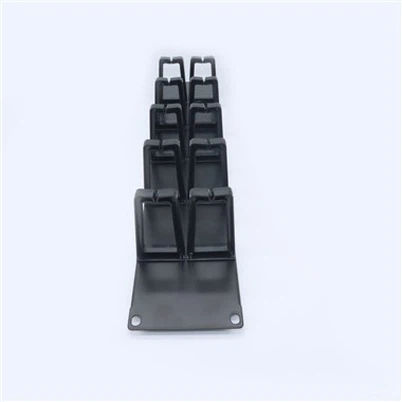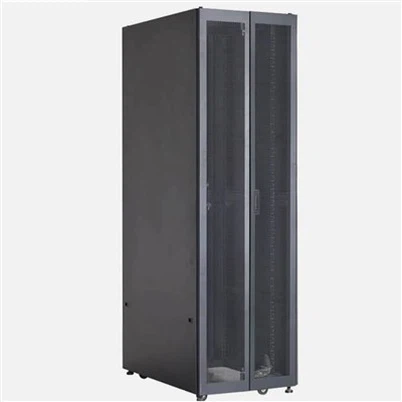Fiber Optic Connectors: MT, MTRJ, MPO,and MTP
Oct 24, 2024
Leave a message
In this article,we will learn all types of fiber optic connectors including MT, MTRJ, MPO,and MTP. Learn how high-density cabling systems support data centers, high-speed networks, and optical equipment. Explore key trends, technical features, and market insights.
1. What are Fiber Optic Connectors?
Fiber optic connectors are also known as fiber optic connectors, they are devices for detachable (active) connections between fibers. They precisely align the ends of two fibers to maximize light energy transfer from the transmitting to the receiving fiber, minimizing the impact on the system due to their presence in the optical link. Fiber optic connectors, to some extent, affect the reliability and performance of optical transmission systems.
Image

Figure 1 Alignment Principle of Fiber connectors
2. MT Connectors
To talk about MPO fiber optic connectors, we must first discuss MT connectors. MT stands for Mechanical Transfer, meaning mechanical alignment. MT connectors are a type of fiber optic connector developed by NTT in Japan for connecting multi-core ribbon fibers, using a plastic ferrule (a cylindrical component that holds the fibers in place), offering excellent high-density installation capabilities at a lower cost. The basic mechanism of MT connectors is to precisely position the fibers within the ferrule using two guide pins, then clamp the aligned part with a pressure clip to maintain a stable connection. Building on this, NTT introduced a smaller MT solution, like the MT-RJ promoted by AMP. Additionally, NTT's MPO, AMP's MPX, USConec's MTP, and Hirose's MD also belong to this connector series.
Image

Mechanical Transfer(MT) connector
3. MTRJ Connectors(Multi Transmit-Receive Joint Connectors)

The origin of the name MTRJ (Multi Transmit-Receive Joint) Connector stems from the combination of MT-type and RJ-type connectors. A key feature of the MTRJ Connector is its ability to connect two optical fibers, meaning that two glass fibers are housed within a single MTRJ optical fiber connector. Additionally, MTRJ connectors are categorized into male connectors and female connectors, with the primary difference being that male connectors have two pins at the end of each connector.
Standards for Optical Fiber Connectors: ANSI/TIA/EIA-604-12, ISO/IEC 11801, and ANSI/TIA/EIA–568-B
Connector Ferrule Diameter: 1.25mm plastic
Insertion Loss: (Multimode: 0.2dB / Single-mode: 0.4dB)
Durability: 500 mating cycles
Locking Mechanism: "Plug-and-Play" RJ locking mechanism, featuring an easy locking and unlocking system similar to RJ45 connectors
Versions: Multimode/Single-mode
Applications: LAN
Number of Ferrules: Duplex
Commonly Used in Europe
Connector Ferrule Diameter: 1.25mm plastic
Insertion Loss: (Multimode: 0.2dB / Single-mode: 0.4dB)
Durability: 500 mating cycles
Locking Mechanism: "Plug-and-Play" RJ locking mechanism, featuring an easy locking and unlocking system similar to RJ45 connectors
Versions: Multimode/Single-mode
Applications: LAN
Number of Ferrules: Duplex
Commonly Used in Europe
As a relatively niche optical fiber connector, the MTRJ Connector is designed to revolutionize optical fiber connectivity. However, its market share remains low, and it has yet to achieve widespread adoption. This article will introduce the MTRJ Connector and explore its specific applications.
3.1 Introduction to the MTRJ Connector
The MTRJ is a square-shaped optical fiber connector designed for both transmission and reception. It consists of two high-precision plastic-molded connectors and an optical cable. The external components are precision-engineered plastic parts that include a push-pull latching mechanism for effortless insertion and removal. It is particularly suited for indoor applications in telecommunication and data network systems.
The MTRJ shares the same latch structure as RJ45 LAN electrical connectors commonly used in Ethernet networks. It aligns fibers using guide pins mounted on either side of a small sleeve, facilitating seamless connection to optical transceivers. The connector's end-face features a duplex design, while its internal structure optimizes installation space, making it ideal for high-density data transmission applications.
3.2 Applications and Use Cases for MTRJ Connectors

OM1 62.5/125 Multimode Fiber Cable: MTRJ/Duplex LC
This configuration employs a PC-polished connector surface for connecting patch panels and/or network equipment requiring OM1 62.5/125 multimode fibers with MTRJ or LC connectors. These ceramic sleeves ensure precise alignment during connection.
This configuration employs a PC-polished connector surface for connecting patch panels and/or network equipment requiring OM1 62.5/125 multimode fibers with MTRJ or LC connectors. These ceramic sleeves ensure precise alignment during connection.

OM2 50/125 Multimode Fiber Cable: MTRJ/MTRJ
This type is used to connect patch panels and/or network equipment requiring OM2 50/125 multimode fibers with MTRJ connectors. Like OM1 cables, it similarly uses precisely aligned ceramic sleeves.
This type is used to connect patch panels and/or network equipment requiring OM2 50/125 multimode fibers with MTRJ connectors. Like OM1 cables, it similarly uses precisely aligned ceramic sleeves.
4. MPO Connectors
MPO (Multi-fiber Push On) connectors are a type of multi-fiber connector used in high-density fiber optic cabling systems. MPO connectors are part of the MT series and are standardized by IEC 61754-7, with parameters like core count, male-female type, polarity, and polishing type.
Image

MPO (Multi-fiber Push On) connectors
5. MPO vs. MTP
Sometimes, people use the terms MTP and MPO connectors interchangeably. MTP is a registered trademark of US Conec for their MPO connectors. MTP connectors are fully compatible with MPO standards and are described by US Conec as MPO connectors designed with tighter tolerances for improved performance. Here, we only discuss MPO connectors because MTP is also considered an MPO connector. Simply put, all MTPs are MPOs, but not all MPOs can be called MTPs.
6. MPO Specifications
MPO cables come in various core counts, typically 8, 12, 24, 48, and 72 cores.

MPO-MPO fiber configuration for 40G Ethernet optical modules
MPO cables use single-mode (OS2) or multi-mode (OM3/OM4) fibers, depending on transmission distance and network type.
Common MPO cable layouts include straight, 12-core 8+4, and 24-core dual-row arrangements. Straight arrangement means linear fiber alignment, while 8+4 and dual-row arrangements combine fibers into different patterns to meet connection needs between different devices.
The fiber diameters used in MPO cables are typically multi-mode 50/125 µm or 62.5/125 µm, or single-mode 9/125 µm, selected based on specific application scenarios and requirements.
7. MPO Technical Features
7.1 MPO connector's performance
MPO connector's performance depends on fiber alignment accuracy and its stability after connection. This accuracy depends on fiber eccentricity, spacing, and the precision of guide pins. If deviations in guide pins and molding processes can be reduced during production, the performance of any MPO connector can be improved.
7.2 High-density design:
MPO connectors use high-density multi-fiber arrays to fit more fibers into limited space, meeting the needs of high-density cabling.
7.3 High-speed data transmission:
MPO connectors support high-speed data transmission, such as 40G/100G and other high-rate network applications. They are often used with high-speed optical transceivers, such as 40G QSFP+ SR4, eSR4, PSM4, and 100G QSFP28 SR4, PSM4 modules, ensuring efficient data transmission.
7.4 High Flexibility:
MPO connectors are designed to withstand various environmental factors based on application needs. For example, industrial and enterprise applications may require circular or rectangular outer jackets on MPO connectors, while specific environments like mining may need more robust circular connectors and metal outer jackets.
7.5 Excellent Interchangeability:
MPO connectors from different brands and models can be used interchangeably, simplifying system integration and reducing costs.
7.6 Low insertion loss:
MPO connectors use advanced polishing techniques and precise manufacturing processes, offering low insertion loss and return loss, ensuring efficient optical signal transmission.

MPO Fiber Optic Patch Cord
8. MPO Applications
MPO high-density fiber pre-connectorized systems are crucial for high-density cabling, enabling efficient data transmission in three main areas:
8.1 Data Centers
In high-density data centers, MPO connectors are commonly used for short-distance, direct multi-fiber connections. They meet high-speed data transmission needs while enhancing system stability and reliability.

MPO connectors are commonly used for short-distance, direct multi-fiber connections.
8.2 High-speed Network Interconnects
In 40G, 100G, and even higher-rate network applications, MPO connectors support simultaneous connections of multiple fiber cores, ensuring high-speed and stable data transmission. They are often used with high-speed optical transceivers to meet the high-density cabling needs of large networks.
8.3 Optical Equipment
In optical equipment like splitters, 40G/100G QSFP+ modules, and large optical switches, MPO connectors, with their ultra-high-density multi-fiber arrays, support simultaneous connections of many fibers. They meet large network's high-density cabling needs while improving throughput and availability.
8.4 MPO Connection Principles
Connectors must match in core count (e.g., 12 to 12, 24 to 24); one male and one female form a pair; and must have the same polishing type (PC to PC, APC to APC).
9. MPO Development Trends
As AI, intelligent computing centers, big data, and IoT continue to develop, the demand for faster and higher-capacity data transmission is growing. As key components for high-speed data transmission, MPO connectors will trend toward higher speeds, smaller sizes, greater density, better interchangeability, and increased intelligence and automation to meet market demands.
10. MPO Selection
In practical applications, MPO cable specifications should be selected based on specific network needs and application scenarios. When choosing MPO cables, attention should also be paid to fiber types and transmission distance requirements, ensuring reliable and standard-compliant cables for high-performance optical transmission.
11. MPO Market
According to QY Research's latest report "Global MPO Fiber Optic Connectors Market Report 2023-2029," the market is expected to reach 1.47 billion by 2029, with a CAGR(Compound Annual Growth Rate) of 7.0%. And according to Valuates Reports' data,
Global MPO Fiber Connector Market Size has reached 650 million in 2023,and it is expected to reach $1.59 billion by 2030, with a CAGR(Compound Annual Growth Rate) of 13.6%.
Previous:How to do UPS Battery Wiring?






